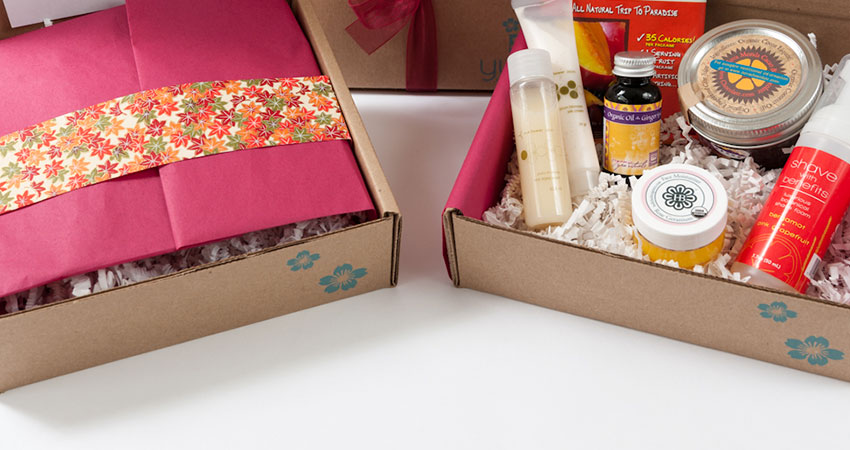Order fulfillment can be overwhelming, particularly as your subscription box business grows and evolves. If you’re outgrowing your current fulfillment solution, you may be thinking about fulfillment outsourcing.
You’ve put considerable time and effort into building your business. You want to find a fulfillment partner who can help meet your goals and give them the tools to succeed. These 7 strategies can help guide the process.
Start with the End Game in Mind
Having a clear idea of your desired outcome can help you identify priorities and give clear direction to your provider. Think about your overall goal for your subscription box fulfillment solution. Is order fulfillment central to your strategy for competitive differentiation? Do you want to improve how subscribers are engaging with your brand? Share your vision with your provider to make sure you’re on the same page from the outset.
Consider Customers’ Service-Level Expectations
Think about what it will take to satisfy your subscription box customers and the fulfillment requirements necessary to support that service level. The following questions may help to spur your thought process:
- Are orders customized to meet personal preferences?
- Do subscribers have the option to add items to their subscription order from an online store?
- Will orders require premium packaging such as a custom box?
- Do deliveries need to be synchronized to accommodate social “unboxing” events?
Communicate expectations like these as early as possible in discussions with your 3PL. Ask about their processes and best practices for ensuring an optimal customer experience in similar situations.
Clearly Define the Scope of Work
In order to develop a comprehensive action plan, your provider also needs to know your exact project parameters and timeline. Make sure you have a good handle on the basic metrics of your business. You need to have a solid understanding of what you are shipping, where and to whom.
Commonly required information includes:
- Frequency: orders shipped daily (anniversary model) or all at the same time (batch model)
- Other sales channels used (i.e., ecommerce, online marketplaces, etc.)
- Monthly projected order volume
- Space requirements
- Number of order configurations required
- Desired order cutoff times for shipping
- Deadlines for changing or canceling orders
- Specific subscriber addresses (helpful for determining optimal distribution network)
- Existing carrier commitments
- Data security requirements
- Returns management needs
Armed with these specifics, your provider will be better able to come up with a solution that is scalable, repeatable and cost effective.
Identify Necessary Capabilities and Resources
Develop an itemized list of requirements for achieving your desired outcome and confirm up front that your 3PL can accommodate them. At a minimum, you’ll want to consider:
Physical space: Think beyond square footage. Is there a geographic location that would help to ensure efficient, cost-effective deliveries? Would a shared-space environment give you better flexibility to accommodate fluctuations vs. a dedicated facility? Do you require narrow aisles or specific racking systems?
Services: Identify the specific capabilities you will need such as order fulfillment, warehousing, call center, transportation, etc. And don’t overlook value-added services. For example, will you need to insert marketing materials or use special packaging?
Scalability: The best fulfillment solutions allow for some flexibility. Will operations need to handle peak order processing? Are all orders the same or do you need to support multiple order configurations? Long term, what will you need to accommodate your growth strategy?
Technology: Communicate your requirements for integrating with current systems, improving inventory visibility or speeding order cycle times, so your provider can identify the appropriate systems and fulfillment automation.
Transportation: Parcel management plays an important role for subscription orders. What is your desired delivery speed? Do batch orders need to arrive within a narrow delivery window? Be sure to ask your provider what steps can be taken to control shipping costs.
Prioritize Communication
A well-run supply chain depends on transparency of information. Agree upfront how you and your provider will use to communicate – and how often. Subscription companies tend to change quickly. Schedule touchpoints accordingly. For example, a quarterly business review may be more effective than an annual one, at least initially.
You’ll also want to address processes for communicating with your customers. Let your provider know your preferences for customer service, collecting feedback and handling problems.
Hold Your Provider Accountable
Work with your provider to establish KPIs up front, so you will be able to measure their success in achieving key business objectives. Common metrics for subscription box fulfillment include on-time shipping, order accuracy, inventory accuracy, on-time receiving and back-to-stock speed. A good rule of thumb: Measure your 3PL’s effectiveness in shipping the right product to the right person at the right time.
Ask your provider about their solution design process. How do they go about building a solution that’s consistent, reliable and scalable? It’s also good practice to set clear expectations for continuous improvement practices and put processes in place to measure them. Are they leveraging quality methodologies like lean/Six Sigma? Bringing new ideas to the table to create efficiencies or improve the customer experience?
Approach the Relationship Collaboratively
Recognize your 3PL as a trusted partner who shares your business goals. They have a vested interest in your success and value your input and feedback.
Your provider is likely to have extensive knowledge and experience gleaned from working with other clients and other industries. Use them as a resource. They might propose a solution you hadn’t considered, such as modifying your distribution network, altering packaging to reduce costs or considering a new vendor to handle heavy return volume. Don’t be afraid to tap their knowledge and best practices. Just make sure that their solutions are scalable, achievable with your available revenue and consistent with the business goals you’ve set forth.
By utilizing strategies like these, you and your provider can establish a long-term, mutually beneficial relationship.
Nicole Lee is director of fulfillment for Saddle Creek Logistics Services

